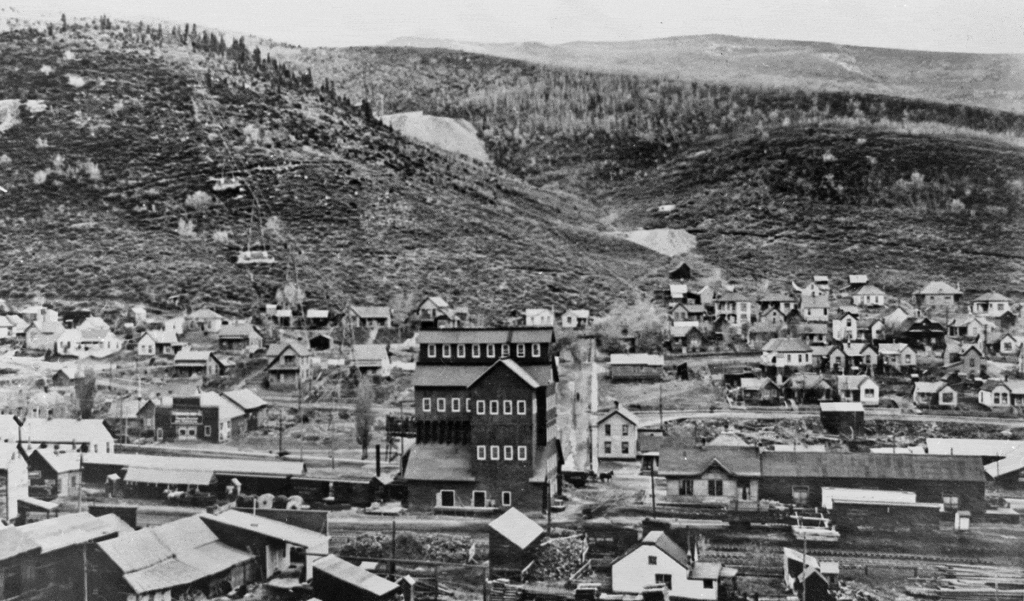The Park City Museum this year is commemorating the 40th anniversary of the fire that burned the Silver King Coalition Building on July 20, 1981. David Hampshire, who wrote the original article covering the fire in The Newspaper will deliver a lecture about this dreadful event on June 29, 2021from 5 to 6 p.m. Before the lecture, let’s look back at how the building was used.
This giant building sat between the two depots of the Union Pacific and the Denver, Rio Grande Western railroads and just north of Heber Avenue, for 81 years. It was the lower tramway terminal for the mighty Silver King Mine, carrying coal up the mountain and silver-bearing lead concentrates and some high-grade lead ore down the mountain in 80 buckets of ore to be loaded into drop-bottom gondola railroad cars for the trip to the lead smelter in Salt Lake or Tooele. The ore was dumped into four enormous bins, from which the amount was measured, labeled, and assayed to keep the smelters honest.
As with every feature of the Silver King Mine, it was the most modern state-of-the-art apparatus available. The 80 buckets carried 500 pounds each of ore down to the lower terminal loading station over 39 towers for a distance of 7,300’. The buckets came into the Coalition Building at the top and automatically dumped the ore into the bins. For the return trip, each bucket automatically loaded 325 pounds of coal to go to the mine buildings on the mountain. Auxiliary power gave an assist when the coal was fully loaded for the uphill trip, but otherwise, the entire operation was powered by gravity feed and could be operated by one man. When the coal reached the top of the sampler, it was dumped and automatically transferred to the boarding houses, the mine buildings, and the mill. In the earliest days, the power was all coal-fired.

Credit: Park City Historical Society & Museum, PCHS Photograph Collection
It is said that when the building burned in 1981, the blaze was accelerated by the many years of accumulated coal dust. Just imagine the activity in that part of town. There were two railroads and many mines still operating to ship ore to the smelters. Those 80 buckets were placed 172’ apart on the tram cable and the whole thing traveled at a rate of 150 feet-per-minute. That means that buckets would enter the Coalition building a little less than a minute apart. Busy place, busy times.
This was a bit of a turning point for Park City in marking “old timers” and “newcomers”. If you were here when the Coalition Building burned, you were a real local. Those of us who came after are still thought of as newcomers. The image of the building was so important to the town, that it was the logo for Treasure Mountains and Park City Mountain Resort.
Register for David’s eyewitness account lecture here.
And keep an eye out for his Way We Were article on the fire on July 21.